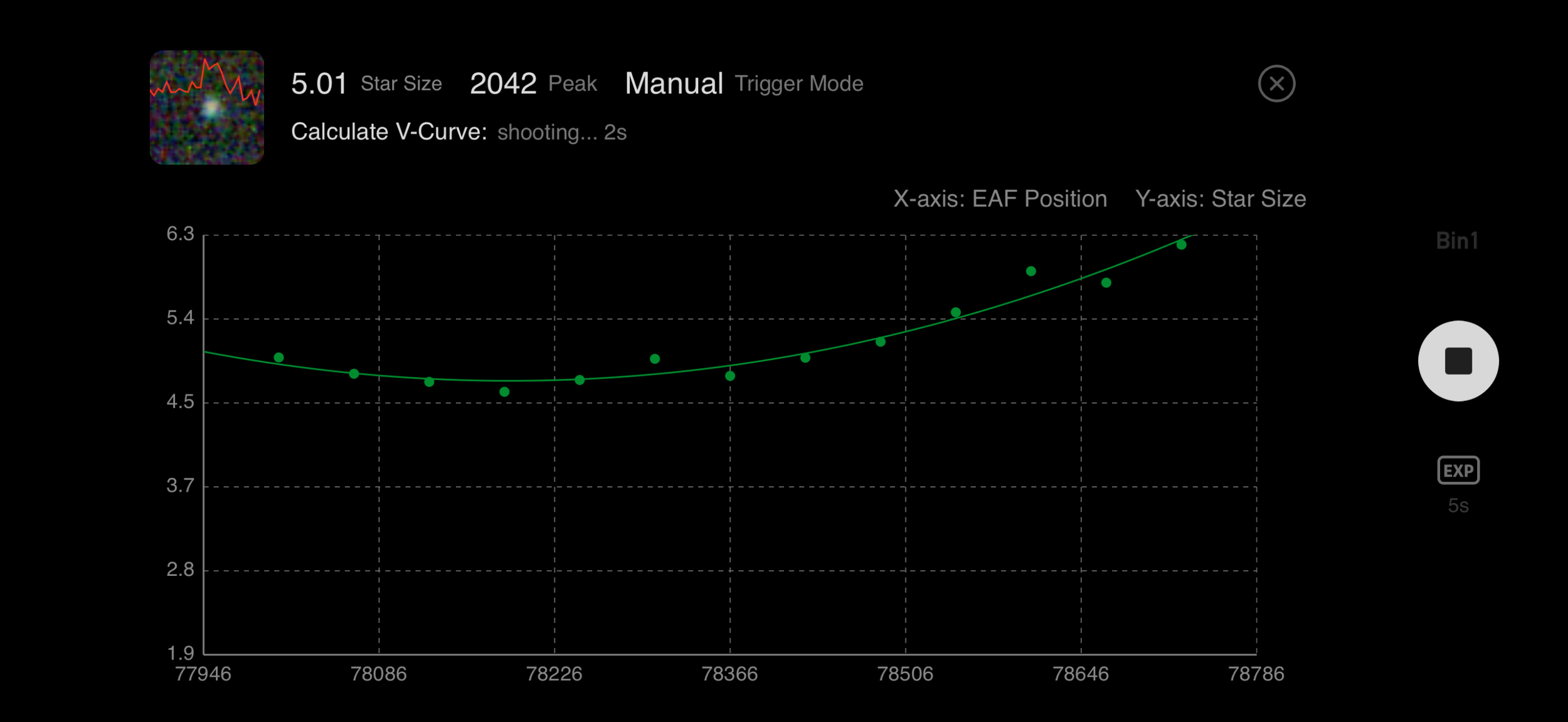Chasing M63: A Night of Astrophotography Under Smoky Skies
On May 30, 2025, I aimed my Celestron 8" EdgeHD at the Sunflower Galaxy (M63), battling bugs, moisture, and wildfire smoke from Canada. With my ZWO ASIAIR Plus and Sky-Watcher EQ6-R Pro mount, I captured 3 hours of data despite a tricky meridian flip and smoky haze. Here’s my tale of grit, gear, and galaxies, straight from the NocturnalLedge.
Canadian Wildfire Smoke Moving In from the North
The Setup
Target: Sunflower Galaxy (M63).
Equipment:
Telescope: Celestron 8" EdgeHD for sharp deep-sky imaging.
Camera: ZWO ASI294MC Pro (cooled to 14°F, Bin1 mode).
Filter: Optolong L-Pro in a ZWO 2" Filter Drawer, tackling light pollution and smoke.
Guider: Celestron Off-Axis Guider with ZWO ASI174MM Mini.
Mount: Sky-Watcher EQ6-R Pro for stable tracking.
Accessories: ZWO EAF for precise focusing, Dew Not Dew Heater Strap, Dew Shield to fight moisture.
Control: ZWO ASIAIR Plus for automated imaging.
Plan:
20 flat frames (2.6s, Bin1).
20 dark flats (2.6s, Bin1, logged as bias in ASIAIR Plus, as it lacks a dark flat setting, for use as dark flats in stacking).
60 light frames (180s, Bin1) for M63, stopping deliberately as smoke thickened.
Used pre-existing master dark files, created seasonally (every 3 months), no need for new darks.
Conditions: Temps dropping from 62.3°F to 56.2°F, high humidity, faint wildfire smoke after midnight.
The Night’s Challenges
Capturing Flat Calibration Frames
Calibration Frames First
Since the night wasn’t fully dark, I started with calibration frames to prep for M63. Flats and dark flats correct vignetting and noise, and I prefer capturing them early. The Dew Shield and Dew Not strap kept my optics clear despite the damp ground, ensuring a clean dataset. Tip from the Ledge: Capture calibration frames before twilight fades to maximize imaging time.
Flat Frames and Cooling Precision
At 8:24 PM, I began flat frames with the Optolong L-Pro. I cool my ASI294MC Pro to 14°F to minimize thermal noise variations, but it hadn’t reached that temp. Fearing inconsistent calibration data, I stopped after 8 frames (2.6s, Bin1). Once cooled to 14°F, I restarted at 8:30 PM, securing 20 flats. Tip from the Ledge: Ensure your camera hits 14°F to avoid calibration mismatches.
Dark Flats in Disguise
Next, I captured 20 dark flats (2.6s to match flats). ASIAIR Plus lacks a dark flat setting, so I logged them as bias for use as dark flats in DeepSkyStacker (DSS). Bias frames aren’t ideal for the ASI294MC Pro due to its complex noise (non-linear response, amp glow); dark flats better match thermal noise for flat calibration. At 8:34 PM, I nailed the set. Tip from the Ledge: Insert “bias” frames into DSS’s dark flats section when stacking, no re-labeling needed.
Polar Alignment and Bug Onslaught
With calibration done, I tackled polar alignment. Usually a 10-minute task with my EQ6-R Pro, it stretched to 20 as bugs swarmed. The damp ground and faint wildfire smoke from Canada didn’t help. Rushing to escape the insects, I struggled to align the mount, testing my patience. Tip from the Ledge: Pack bug spray and a headlamp to stay focused.
Meridian Flip Chaos
At 9:24 PM, I set up 60 light frames (180s) for M63, planning to stop as smoke thickened. The L-Pro filter boosted contrast against light pollution and haze. A meridian flip, 8 minutes away, confused the EQ6-R Pro, which slewed back and forth, delaying the autorun. After three auto-centering tries (the first 2.55° off), it settled at 9:34 PM. Tip from the Ledge: Schedule the session start 30 minutes before or after the meridian flip to avoid mount confusion; flips mid-session are fine.
Guiding Through Smoke
The Celestron OAG, positioned before the filter drawer, and ASI174MM Mini guided well early, viewing unfiltered light. I used 10-pixel dithering every three frames to eliminate hot and cold pixels. Post-midnight, wildfire smoke thickened, stretching settle times to 55s as the ASI174MM struggled with faint guide stars. I captured all 60 frames by 1:09 AM. Tip from the Ledge: Monitor smoke forecasts, as haze scatters light and impacts guiding.
Auto-Focusing Success
ZWO EAF Auto Focus Routine
The ZWO EAF adjusted focus every 30 minutes as temps dropped 6°F. Focus positions shifted from 78415 to 78119, keeping stars crisp (~4.5–5.5 size). The L-Pro ensured reliable focus stars for the imaging camera. The chart below shows focus stability and temperature changes:
The Data
M63 Stacked Image without Post Processing
Calibration Frames:
Flats: 20 frames (2.6s, Bin1, L-Pro).
Dark Flats: 20 frames (2.6s, Bin1, logged as bias).
Master Darks: Pre-existing, created seasonally.
Light Frames: 60 frames (180s, Bin1, L-Pro), totaling 3 hours.
Processing Plan:
Stack in DSS, inserting “bias” into the dark flats section.
Process in PixInsight: STF, Dynamic Crop, Fast Rotation, Image Solver, Photometric Color Calibration, Spectrophotometric Color Calibration, Spectrophotometric Flux Calibration, Gradient Correction with Automatic Convergence, BlurXterminator, NoiseXterminator, Generalized Hyperbolic Stretch, Linear Stretch, StarXterminator, Curve Transformation on galaxy and star images, Pixel Math to recombine.
Finalize in Adobe Lightroom with watermark; optionally use Photoshop with StarSpikes Pro 4 for star spikes.
M63 Final Processed
Lessons from the Ledge
Gear Prep: The Dew Not and Dew Shield were clutch; add bug repellent.
Meridian Timing: Start 30 minutes before or after meridian flips.
Dark Flats Hack: Insert “bias” as dark flats in DSS, no re-labeling.
Smoke Vigilance: Plan frame counts around smoke forecasts.
Filter Power: The L-Pro filter was key for light pollution and smoke.
Looking Ahead
Bugs, smoke, and a meridian flip couldn’t stop me from bagging 3 hours of M63 data. The ASI294MC Pro, L-Pro filter, and EQ6-R Pro were MVPs. I’m stoked to stack these frames and reveal the Sunflower Galaxy’s details. Next time, I’ll time the meridian better and pack bug spray. From the NocturnalLedge, here’s to clear, smoke-free skies!
What’s your toughest imaging challenge? Share your stories or tips below!




